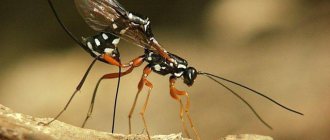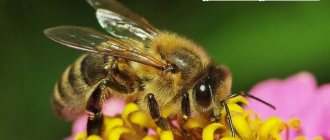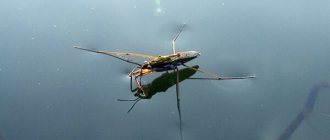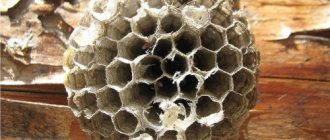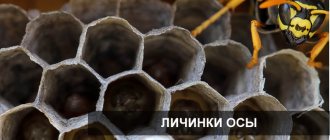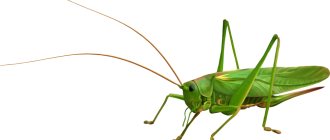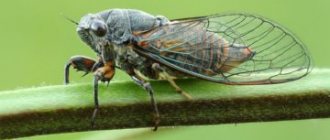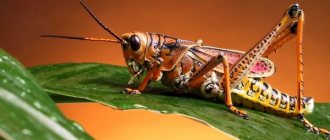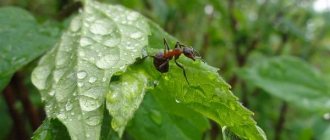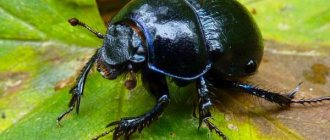Mosquitoes are a serious problem during the warmer months. The bites cause painful itching, and the insects themselves can carry diseases dangerous to human health and life. Interestingly, these harmful creatures do not only bother the average person on the European continent. You can meet them all over the planet. They are not found except in Antarctica. But in the Arctic they feel quite confident, although they are active only for a few weeks during the entire calendar year. At the same time, they reproduce in huge numbers. Caribou and reindeer bear the brunt of the attack, losing up to 500 ml of blood at a time due to the attacks of hordes of bloodsuckers.
People are not the only target of mosquito attacks.
Mosquitoes happily drink the blood of mammals and even birds. Nature has provided a mechanism that balances the spread of bloodsuckers. She created a special way of reproduction, as well as a limited lifespan of individuals. Get rid of mosquitoes in your country house
Get rid of mosquitoes in your country house
Hit from the USA. A guaranteed way to destroy all mosquitoes on the site.
skeetervac.ru
Open ›
How long do these harmful insects live and what does the timing depend on?
Mosquito insect: types, brief description, photo
There are several types of mosquitoes, the most common of which are the following:
- Squeaker. This species is the most numerous. Its peculiarity is that it inhabits almost all corners of the planet. The squeak is small in size, females feed on blood, while males are content with plant food.
- Centipede. The peculiarity of this insect is its size; a mosquito can reach 6-7 cm in length. At the same time, long-legged mosquitoes are absolutely safe for humans and their health.
Mosquitoes
- Tropical mosquito species. This type of insect is distinguished by the fact that it poses a danger not only to health, but also to human life. It is these mosquitoes that carry the most terrible diseases.
- Dergun. The insect got its name because of the constantly twitching long legs that the mosquito puts aside while sitting on any surface. For people, as well as other animals, these representatives of the animal world are harmless.
What do they eat?
No matter how paradoxical it may sound, all mosquitoes feed exclusively on nectar. The fact is that to support the maturation of eggs, females of some species need warmth, which is provided by the blood of mammals. It’s easy to remember the differences between target species:
- Squeaker mosquitoes. Females drink blood, males do not.
- Long-legged mosquitoes. Nobody is a bloodsucker.
- Malaria mosquitoes. Females drink blood, males do not.
Thus, two trends can be noted. Firstly, Karamors do not suck blood, and secondly, among the rest, only females are “vampires”.
Having an understanding of three completely different species, you can determine the level of threat posed by a particular insect. At the end, a short comparative overview of all the main differences:
- Common mosquito
. Six to seven millimeters long, even legs, antennae shorter than the proboscis, parallel to the surface when planted. Tolerant of cold weather, it can settle near any body of water. Females consume blood for reproductive purposes. It does not tolerate malaria, but can cause eczema, urticaria, and meningitis. - . Four to eight centimeters long, uniform legs and wings, flies slowly. When landing, the abdomen drops slightly. Hardy, unpretentious to ponds. It does not consume blood, feeds on nectar, and therefore does not tolerate any diseases.
- . Six to seven millimeters long, the hind legs are longer than the others, there are characteristic dark spots on the wings, the antennae are proportional to the “sting”; when sitting down, it raises its abdomen. Does not tolerate very harsh winters, prefers clean and clear water. Females consume blood. It is a carrier of malaria.
Nothing can ruin an evening walk along a pond like mosquitoes. We have long stopped paying attention to these annoying insects. Their bites are not too painful, and the affected areas calm down quite quickly. However, they are not such harmless creatures. Mosquitoes can become carriers of serious diseases transmitted through blood, small particles of which they carry on the tips of their proboscis.
Common mosquito
is a blood-sucking insect belonging to the order Diptera. There are more than two hundred species of mosquitoes, and not all of them feed on the blood of mammals. For example, almost all male mosquitoes are “vegetarians” and prefer flower nectar. Only the female's diet consists of blood. Mosquitoes are distinguished by a long nose, at the end of which females have sawtooth jaws. With their help, the mosquito gnaws through the skin and sucks blood through the resulting hole. Neither strong clothing nor thick animal fur stops the mosquito. And the spout is long enough to overcome these obstacles.
The common mosquito: where and how long does it live, what does it feed on in the forest, in the swamp?
This insect can also be found under the name “squeak mosquito”. If we talk about the scale on which these bloodsuckers are found, they are truly surprising.
- Squeakers are found throughout Europe. You can also find them in more remote areas of the Earth; they got there during the time of the Great Geographical Discoveries.
- If we talk about the terrain that peepers prefer, it is most often swamps and forests. Bloodsuckers choose this place for a reason, because they love humidity and warmth. It should also be noted that the common mosquito can live anywhere, provided that its food source, that is, a person, is nearby.
Common mosquito
- Regarding the nutrition of these insects, it must be said that only females drink blood, since it is this type of food that they need for procreation. Males prefer plant juices - this is their only food. The females of this insect, both in the forest and in the swamp, in the absence of humans, look for another source of blood. Often the source is other animals: frogs, birds, etc.
- The life of a mosquito is full of various challenges. Its lifespan depends on the environment and temperature at which the bloodsucker is located. It is important to say right away that females live 1.5-2 times longer than males. Generally speaking, females can live from 40 to 120 days, males are correspondingly 2 times less.
Where do mosquitoes live?
The places where mosquitoes live are characterized by high humidity and warm climates. Insects can be found everywhere, they are absent only in the eternally cold Antarctica. Distributed in areas with hot and temperate climates. Here they can live up to six months.
In temperate latitudes, insects hibernate during the cold winter period and awaken with the arrival of spring. They even live in the Arctic, during the warming period, which lasts several weeks, they reproduce with terrible force and get deer.
Females choose bodies of water to lay eggs, but the habitat must be studied. The water should have an average temperature, it should not be too cold and dirty. Its temperature should be +25-350C. The composition must contain organic and nutritious substances. They prefer small bodies of water that are not inhabited by predatory fish species.
How to distinguish a female mosquito from a male: comparison, photo
Almost all animals of the same species differ from each other in the structural features of their bodies, depending on whether they are females or males, and mosquitoes are no exception.
- Mosquitoes have what are called “antennas”. So the main difference lies precisely in them. Males boast lush, thick antennae that resemble whiskers. They need them to hear better. The female does not have such beauty; her antennae are much smaller and practically invisible to the naked eye. In principle, she does not need them, since she does not need hearing, because she is not looking for a partner, but the partner is looking for her.
Female and male
- But the female has a well-developed oral apparatus, with the help of which she can bite the victim and thus provide herself with blood. The male has no need for this - he feeds exclusively on plant foods.
- Also, female squeakers have more developed sensory abilities. They need them to find a donor. As is already clear, male mosquitoes do not possess these abilities, since they do not need donors.
Let us conclude that the structure of the oral apparatus of a mosquito and a mosquito is different. This is due to the fact that the female needs to receive blood for reproduction, and for this she needs to initially bite the victim in order to bite through its skin. The male feeds exclusively on plant foods – plant juice, nectar of different flowers. Its oral apparatus is developed in such a way that it simply has no teeth. Therefore, only mosquitoes bite these insects.
Insect protection
To protect themselves, people use special devices, repellents and folk remedies. Each option has its own characteristics.
Special devices
- Traps. They are only suitable for catching pests. Before catching a mosquito in a room with their help, you need to choose a place for installation. By installing them in the house, you no longer have to think about how to catch blood-sucking mosquitoes in your room or in your country house. The caught insects are thrown into hot water.
- Fumigators. Such devices are suitable for those who are interested in how to kill annoying mosquitoes at night. Fumigators distribute repellents that attract and kill parasites.
- Repeller. The principle of its operation is based on the production of ultrasound. Modern repellent devices differ in range and configuration. There are stationary and autonomous repellers. Stationary devices are installed in local areas and summer cottages. Autonomous devices are used by fishermen and hunters.
Chemicals
For protection, repellent preparations are also used, which are produced by various companies. The most popular are:
- Sprays and aerosols. They contain insecticidal components and natural repellents. They interrupt the smell of a person.
- Creams and gels, for the preparation of which various components are used.
Folk remedies
Among the folk remedies used to repel blood-sucking insects are:
- Tomatoes, geraniums, bird cherry and tansy. These plants have a rich aroma. Pests never approach them. They are planted in pots or in the soil near the house in order to create a buffer zone.
- Citrus extracts. They are applied to the skin using cotton pads or clothing. Essential oils are used to treat window openings and furniture.
- Vanillin. It is presented in various variations. You can choose vanilla sugar or vanillin extract to prepare the protectant. The list of recipes in which this component is present is huge. Therefore, each person will be able to choose the appropriate option.
Before killing mosquitoes, you need to think about whether they really disturb the peace and interfere with life. After all, not all species are harmful to humans and the environment.
Does a mosquito have a brain, a heart, what organs are there, how many teeth, what does a mosquito squeak, and does it breathe?
Mosquitoes, like any other living creatures, have a certain body structure and internal organs.
- Bloodsuckers have a heart, it is represented by a muscular tube. The blood of these insects is colorless.
- Regarding the brain, it must be said that it also exists. It is represented in mosquitoes by the suprapharyngeal ganglia. They are divided into 3 parts and form the forebrain, midbrain and hindbrain. Each part of the brain performs its own functions.
- Many people wonder whether bloodsuckers have teeth. Mosquitoes have teeth, moreover, they play an incredibly important role in the life of this insect. After all, it is with the help of teeth that a mosquito bites through the donor’s skin. However, they have an unusual appearance for us - prickly bristles. An adult mosquito can have about 50 of them.
Structure of a mosquito
- The insect makes a squeak using nothing other than its wings. Due to the frequent flapping of thin wings, such a sound is formed that is unpleasant to our ears.
- Unlike people, all insects breathe using the trachea, and not the lungs, since they simply do not have the latter. The tracheas of bloodsuckers are represented by tubes through which air passes and which come out on the sides of the body with peculiar openings - spiracles.
- Generally speaking, these insects have a nervous system, oral apparatus, excretory organs, a heart and, accordingly, a circulatory system, genitals, and a respiratory system.
Classification
Insects are divided into two subspecies:
- C.p. pallens is a mosquito with a brown body color and white stripes on the limbs and proboscis. Distributed in Japan and North America.
- C.p. pipiens - the subspecies has two forms:
- Culexpipienspipiensformapipiens – dipterous insects of this form easily adapt to various conditions for the development of larvae. Their offspring grow in any body of water and do not require clean water. The number of larvae depends on the nature of the development site - in a puddle there are 100-800 of them per square meter. m, and in the gutter 5400-27500 pieces/sq. m.
- Culexpipienspipiensformamolestus - urban or basement squeak mosquito. The form has several behavioral and physiological differences. Adults do not require swarming to mate. One of the important features of molestus is autogeny, the ability to lay eggs once without feeding on blood. Young females manage to lay a clutch of 100 eggs immediately after emerging from the pupa. This ability allows you to quickly increase the number of insect colonies.
The city mosquito is characterized by aggressive behavior. Its bites are more painful and are more often accompanied by infections and allergic reactions. To exterminate adult parasites in basements, treatment is carried out using contact insecticides that have a prolonged residual effect. Spraying vegetation within a radius of 300 m around the building allows you to increase efficiency. Larvicides are used in areas where larvae hatch.
How does a mosquito sleep in the summer, where does it hibernate, and at what temperature does it die?
The activity of a mosquito directly depends on the air temperature where the insect is located. When the temperature drops significantly, for example, at the beginning of autumn, the bloodsuckers disappear, since such a temperature is not suitable for them to reproduce.
- Insects overwinter where they live. Mosquitoes do not fly to another area, country, etc.
- Gaps, cracks in walls, secluded corners, windows, curtains - all these are ideal places for mosquitoes to hibernate.
- Mosquitoes do not disdain various non-residential buildings, such as sheds, garages, etc.
- It is important to note the fact that, in principle, mosquitoes do not need to sleep. If environmental conditions are suitable for it, it will actively continue its activities, reproduce and live.
Optimum temperature for mosquitoes +15-20°C
- High temperatures are more destructive for these insects. The higher the air temperature, the shorter the mosquito's life will be. As for low temperatures, bloodsuckers hibernate at above-zero temperatures, however, if the climate changes slightly and becomes colder, mosquitoes will simply go into their other state - torpor.
- The optimal temperature for the life of these insects is considered to be +15-20°C. It is difficult to say unambiguously what mark on the thermometer will indicate that mosquitoes will die at this temperature. However, temperatures of -7°C and above 28-30°C will have a negative effect on mosquitoes, as a result of which they may die.
Air temperature
Mosquitoes don't like heat or cold. What weather do mosquitoes like? The optimal temperature for their life and development is +20 °C. But bloodsuckers are active already at +12 °C. The lower the temperature, the slower the insects develop and practically lose their ability to reproduce. Pests don't like high temperatures either. Why don't mosquitoes like heat? In the heat, their thin, weightless body dries out on the fly. But if you don’t see them in the city on a hot day, you should go hiking or fishing and have to fight off the insects.
Mosquitoes are afraid of the sun and hide in the shade of trees, grass, and bushes. But if they are disturbed, they will attack, despite the heat, especially since the dense foliage reliably protects them from the direct rays of the sun in the forest.
Some people think that mosquitoes love the heat, since they are active in the summer, but in fact this is not so, they do not like the sun and are even afraid of it.
In summer, the risk of attack is higher in the morning and evening. During the day they seek coolness and sit in shelters. There are species of mosquitoes that are active all night.
With the onset of cold weather, mosquitoes disappear. It cannot be said that mosquitoes are afraid of the cold, because they do not die, but spend the winter, entering diapause in the adult, pupal or egg stages.
Adult insects hide in tree hollows, animal burrows, tree trunk cavities and other places protected from the cold. Only females hibernate; nature has not given males such a privilege.
The eggs wait for warm days in the soil, mud at the bottom of reservoirs. Pupae are attached to aquatic vegetation or are also buried in silt and mud. After all, even in severe winters, only the top layer of reservoirs freezes.
In spring, as warm days arrive, the development of larvae continues. New individuals emerge from the eggs.
What temperature do mosquitoes not like? At temperatures from +16 to +25 °C they feel good. Temperatures outside this range negatively affect the life of insects.
Where do mosquitoes come from, how are they born and reproduce?
Initially, during the mating period, males look for their females. The thing is that mosquitoes make a squeaking sound with their wings, it differs from the sound that males make. Moreover, the males of these insects are very selective, since they prefer older females. They also determine the age of a female by the sound her wings make when flying.
- Next, the insects form a kind of swarm, and at this time the fertilization process itself occurs.
- After this, the mosquito begins to actively search for food, however, at this time it is exclusively interested in blood. Having received the required portion of food, the insect lays eggs.
- Larvae emerge from the laid eggs.
Life cycle of a mosquito
- After a certain time, pupae are formed from such larvae.
- In this state, the future insect continues to develop for some time. In just a couple of days, each pupa will mature into a fully viable insect - a mosquito.
Reproduction and lifespan
During the mating season, females produce an incomparable squeak, which they produce due to the movements of their wings. This sound attracts males. Moreover, the sound of mosquitoes of different ages is different.
The mosquito catches these differences and chooses an adult female capable of childbearing. In the swarm formed by mosquitoes, the process of mating of females with males occurs. After this, eggs are laid.
Sometimes their number can reach up to 290 pieces. This process can be repeated every 3 days. After going through all the phases of its development, an adult mosquito is eventually born. The lifespan of males and females is slightly different. The first ones usually live no more than a month. Females are given a longer period - about 2 months.
Mosquito larvae: what do they look like, what are they called?
Most often, mosquito larvae are called simply larvae, however, sometimes you can find another name - “bloodworm”. By bloodworm we mean the general name for the larvae of these insects, however, it may differ depending on the type of mosquito, etc.
- Bloodsucker larvae, as is already known, emerge from eggs laid by an adult.
- As a rule, mosquitoes lay eggs in damp places, in ponds, and containers with standing water. Accordingly, the larvae live in the same places.
The larva turns into a pupa
- Outwardly, the larva resembles only a small fish or a small worm that has been born.
Danger to humans
Mosquitoes drink blood to reproduce, to replenish energy reserves, and to continue living. Humans attract insects with the smell of lactic acid, carbon dioxide, sweat, and heat. At the site of the bite, irritation, swelling and redness, itching appears, and sometimes a severe allergic reaction develops.
There is no particular harm from an ordinary mosquito. However, other species pose a danger to humans. In tropical countries, insects cause myiasis. They lay eggs in humans, the larva begins to develop under the skin on the body or migrates to the eyes, internal organs, and brain. Deadly diseases are carried by malarial mosquitoes, icteric mosquitoes. Karamors or large mosquitoes are classified as agricultural pests. This species is not capable of biting humans; it feeds on nectar and plant juices. The larvae damage roots, berries, and fruits.
How dangerous are mosquitoes, why is it necessary to fight mosquitoes?
By themselves, as animals, mosquitoes, in principle, are not particularly dangerous, however, these insects are carriers of serious illnesses.
- These bloodsuckers are primarily dangerous because they carry diseases such as malaria. It is important to understand that this disease is transmitted only by malaria mosquitoes.
- Also, bloodsuckers can “give” a person, by biting him, various types of fevers.
- In addition, insects are carriers of encephalitis, a serious disease that is very dangerous not only for health, but also for human life.
- Mosquitoes can also carry some infectious diseases.
Mosquito bite - what is the danger
The female blood-sucking mosquito has sharp jaws, with which it gnaws a hole in the skin of a person or animal, while simultaneously spraying saliva into the victim’s body with a substance that prevents blood clotting. It is this component of saliva that causes an allergic reaction in the form of itching, redness of the skin and swelling. She then plunges her proboscis into the wound and sucks out the “red liquid.”
The female may bite several times until she receives the amount of blood and protein she needs, after which she goes in search of a moist place where she can lay eggs. Unfortunately, mosquitoes do not die like bees, but, on the contrary, multiply after being bitten.
The female is ready for fertilization immediately after she lays her eggs.
Mosquitoes are not very picky and bite everyone: sick and healthy, so an infection from one organism through the insect’s proboscis can be transmitted to another organism and infect it. True, there is one important condition for infection - the causative agent of the disease must develop in the body of the bloodsucker, and not just get there. The following diseases are predominantly transmitted:
- malaria;
- yellow fever;
- encephalitis;
- meningitis;
- Lyme disease;
- filariasis;
Fortunately, HIV and AIDS are not transmitted through the bite of this insect.
In Russia, mosquitoes transmit infectious diseases from one person or animal to another, but a “special component” of their saliva can cause an allergic reaction, which can turn into dangerous angioedema (if not stopped in time).
I have heard several times that people have died after being bitten by mosquitoes because they did not receive prompt medical attention.
Can mosquitoes carry diseases, HIV, hepatitis C?
Today you can hear information that these insects are capable of transmitting a disease such as hepatitis. Scientists have conducted a number of studies, their results are as follows:
- It is almost impossible to become infected with this particular disease.
- The viruses of this disease “live” in the blood, and when a mosquito bites its victim, it injects it exclusively with its saliva.
- The insect's mouthparts are designed in such a way that blood can only be sucked inwards, after which the bloodsucker cannot throw it out.
- The same situation occurs with HIV. Moreover, this insect simply will not be able to transmit the required amount of virus to a person for infection.
- Regarding other diseases that were described earlier, things are different. Mosquitoes can easily infect the people they bite with them.
What will happen if mosquitoes disappear?
If you think about this issue and try to comprehend it globally, you can come to the conclusion that the complete disappearance of certain species of animals may occur.
- Since mosquitoes are the food of many animals, if they disappear completely, these species will also die out.
- Moreover, these insects will be replaced by others that will multiply even faster and cause even greater harm to nature and humans. For example, various types of midges and ticks.
- We can also say that mosquitoes perform a protective function. It is precisely because these insects have infested the jungles and many forests that this area is not exposed to human influence. The development of these territories by humans will lead to an increase in the population on the planet and, accordingly, to a shortage of all the most important resources.
- In addition to the animal world, the plant world will also suffer, because if these insects are gone, then there will simply be no one to pollinate some flowers and plants.
Sweet taste
It is known that mosquitoes love sweets, so they are more likely to bite those people who eat a lot of sweets. Secretion more actively releases saccharides. Thanks to sucrose, the taste of the skin becomes preferable to mosquitoes. Diabetics fall into the “favorites” category. After all, these people not only have sweetened blood, but they also exhale air saturated with acetone and estradiol.
In addition, the circulatory system is enriched with lactic acid after the breakdown of glucose. This element is a real delicacy for mosquitoes. Lactic acid is more intensely released in the body due to active physical activity and consumption of certain types of foods with large amounts of carbohydrates.
Malarial, common mosquito, mosquito: comparison, similarities, differences, photos
Many types of mosquitoes are very similar to each other, which is why we often confuse them.
- Malaria mosquito. This insect has fairly long legs and a proboscis. If we compare these insects with ordinary mosquitoes, they have some differences. The legs of the malarial bloodsucker are much longer, as is its proboscis, compared to the limbs of the squeak.
- Mosquitoes are insects that, in principle, are similar to ordinary mosquitoes, however, they differ from the latter in the environment in which they develop and live. The similarity of these bloodsuckers is that they feed not only on plant foods, but also on blood.
- At the same time, malaria mosquitoes and mosquitoes are dangerous for people, because they carry various ailments and infections. While an ordinary squeak does not pose such a danger.
Character and lifestyle
Mosquitoes are not harmless insects. Their females are real parasites who need to feed on someone else's blood for their continued existence and production of offspring.
Often their bites become fatal for people, because mosquitoes carry a wide variety of diseases dangerous to people. Insects are distinguished by amazing endurance, but they do not live in too cold climatic conditions.
In places with a temperate climate, mosquitoes are active from late spring to October. With the early arrival of spring, their appearance can be observed in April.
In the summer, they can be everywhere - in a living room, on the street, in the forest, near a pond. In winter, mosquitoes find refuge in barns with livestock, in basements and other buildings.
Developing mosquito-like speed, insects can cover a distance of 1 km; females especially practice such flights when they are looking for something to profit from.
Mosquitoes are the root cause of many ruined outings and just restful nights in a living room. Therefore, people have long made sure that in such situations they always have the necessary mosquito repellents.
A variety of methods are used to combat these insects. People have never learned to completely destroy squeakers, but they still manage to protect themselves from them.
mosquito repellers have long proven their worth which you can turn on in your living room and not be afraid of being woken up or bitten by an insect at night. These devices have very different structures, but the benefits from them are incredible.
During camping and expedition conditions, people are saved by various ointments from mosquito and insect bites . There are ointments that help relieve symptoms of itching and allergic reactions caused by mosquito bites. They help avoid severe negative consequences in the form of swelling and inflammatory processes.
A mosquito with long legs: what is it called, does it bite?
These insects, which are huge compared to ordinary mosquitoes, instill fear in almost all people. Are they really dangerous?
- This insect is called a caramora or simply a long-legged mosquito .
- These insects are distributed almost everywhere, with the exception of places where it is constantly very cold.
- Regarding the danger that Karamora can bring, the following must be said: it simply does not exist. This mosquito does not have the necessary structure of the oral cavity to carry out any biting actions.
Long-legged mosquito
- The proboscis, which we can see with the naked eye, only gives the insect the opportunity to feed on plant food, and the length and size of the body are just the characteristics of this mosquito.
Importance for nature
The role of mosquitoes in nature is much more significant than it might seem at first glance. This small insect takes an active part in many important processes:
- Living most of their lives in water, they accumulate in their bodies a huge amount of important trace elements, minerals and beneficial bacteria, which, after the death of the insect, end up in the soil, enriching and fertilizing it;
On a note! From this point of view, mosquitoes become especially important for the taiga, where they are sometimes the only ones who transfer microelements from swamps to the soil! Every year, these small insects carry about 16 kg of nitrogen, 9 kg of phosphorus and 6 kg of calcium on their tiny legs!
- in the form of pupae, larvae and adults, they are food for many species of fish, birds, animals and large insects; In this way, mosquitoes maintain the stability of their food supply;
- Feeding on plant nectar, they participate in the pollination process, spreading pollen on their legs, wings and proboscis.
Surprisingly, such a simple and sometimes dangerous mosquito actually brings enormous benefits to nature.
At what altitude do mosquitoes fly, to what floor do they reach?
Sometimes it seems that these squeaking bloodsuckers are simply ubiquitous. Despite the small size of its body, this insect is capable of rising quite high in the air and pestering even residents of high-rise buildings.
- Despite such encounters with mosquitoes, they themselves do not fly too high of their own free will. Mostly these insects rise above the ground only a few meters.
- However, drafts and wind can lift such a small insect much higher than 2-3 m. If we are talking about the presence of these creatures on the upper floors of, for example, a 9-story building, then it is worth saying the following: they get there mainly not through the open air, but through ventilation hatches, etc.
Mosquitoes fly high only when there is wind
- During such flights, the insect rests several times, clinging to surfaces. This is how mosquitoes can reach the highest floors.
- There is information that this insect was found on the 54th floor of the building.
Interesting facts about mosquitoes
Despite the fact that few people like mosquitoes, their lives are full of interesting things. And if we consider these insects not as bloodsuckers, then the interest in them will be much stronger.
- Mosquitoes have a unique daily routine. During the day, these creatures rest, hiding not only from the bright rays of the sun, but also from other animals that feed on them.
- There is information that this is exactly the number of mosquitoes – 1,200,000 – needed to drink all the blood from a person.
- Many people do not know the fact that only female mosquitoes drink blood and bite, however, this is true.
- Initially, mosquitoes were called flies, in principle, like all other dipterous insects.
- Mosquitoes are able to smell prey at a distance of several tens of meters.
As you can see, mosquitoes are not only constantly disturbing squeaking creatures. These insects benefit both humans and all living nature. Moreover, the death of these insects will lead to irreversible processes, so it is impossible to deliberately exterminate them.
Biological characteristics
Mosquitoes belong to the subfamily of long-whiskered dipterous insects; they are also classified as part of the so-called vile complex. They occupy a habitat in which there are practically no negative temperatures, that is, these are the tropics and subtropics. In the territory of the former Soviet Union, these are Crimea, the Northern and Southern Caucasus, part of the Stavropol Territory and Kuban, and the southern regions of Ukraine. In total, there are more than seven hundred species of mosquitoes, many of which carry various dangerous diseases for both humans and animals.
Description
Mosquitoes are very small insects, rarely their body length exceeds two millimeters. The color scheme is also not saturated and varies in black and white from almost transparent to dark. The only thing that can color an insect is the drop of blood that it sucks from the victim.
Nutrition
In the normal state, mosquito larvae and adults feed on natural juices and plant sugars. But in order to develop oviposition, the female is forced to feed on blood; in this regard, nature has laid down some secret known to her. Apparently, plant food is not enough for the offspring to mature.
Reproduction
Mosquitoes reproduce in a full cycle, that is, their generation involves a complete transformation in stages:
Unlike the well-known bloodworm, a mosquito larva that lives in water, the offspring of mosquitoes do not develop in an aquatic environment, but simply in a humid environment at an optimal temperature of 25 to 30 degrees, depending on the species. Often their habitats are manure heaps, rodent burrows or poultry houses.
Difference from a mosquito
Many people mistakenly believe that these insects represent the same family, only they have different names; this is not true, and the differences between mosquitoes and mosquitoes are significant. We have already mentioned some of the differences in our story; we will list how a mosquito differs from a mosquito:
- Let's start with a squeak; unlike a mosquito, mosquitoes do not squeak. After all, the nasty mosquito sound is produced by the vibration of the wings, and fat mosquitoes don’t really like to fly. In Italy, for this reason, they are even called “pappa tachi,” which translates as “biting silently.”
- A sitting mosquito has wings folded at an angle to its body, while a mosquito's wings are parallel to it.
- Mosquitoes first fly to the victim and crawl over her body before biting, when, like mosquitoes, they move in small jumps.
- The flight qualities of mosquitoes are unimportant, so it is much easier to swat them than fidgety and agile mosquitoes.
Now let's talk about the harmfulness that these small insects pose to humans. A mosquito bite is similar to a mosquito bite in its method of execution. The insect also selects the most vulnerable spot on the victim’s skin and pushes its proboscis there, pushing apart the tissues and helping with gnawing mites at the tip of the proboscis. At the same time, the insect injects saliva into the canal with anesthetics and anticoagulants.
Moreover, in the picture we presented the mildest version of the consequences of bites. Depending on the type of mosquito and personal intolerance, skin damage can be much more significant. And besides the obvious symptoms of mosquito bites, such as burning or scabies, larger troubles may await you.
Mosquitoes are carriers of dangerous diseases such as:
- leishmaniasis;
- bartonellosis;
- mosquito fever.
In addition, mosquito bites often cause such dangerous skin lesions as phlebotoderma.
